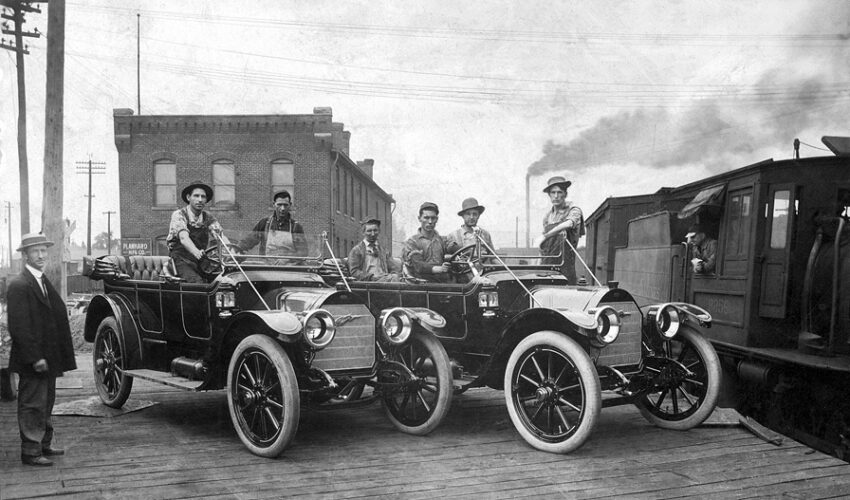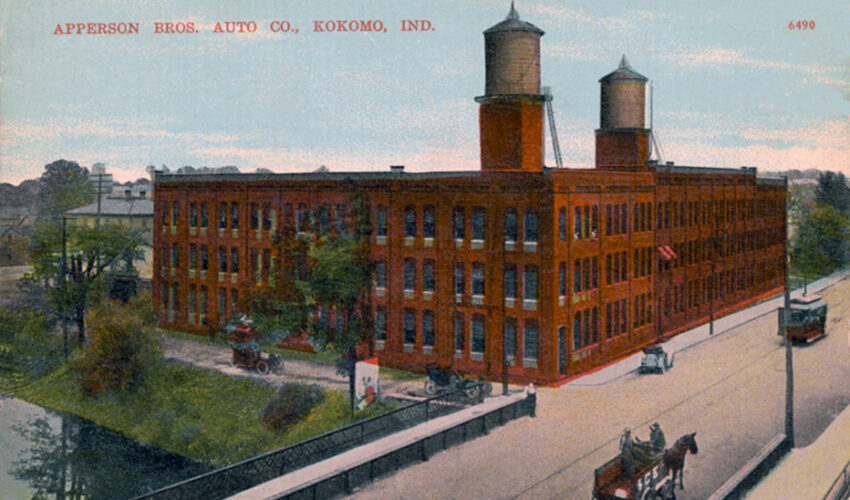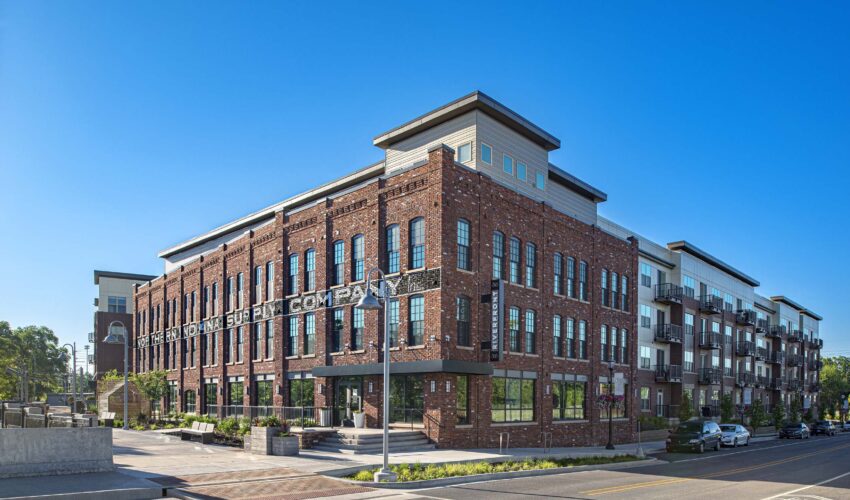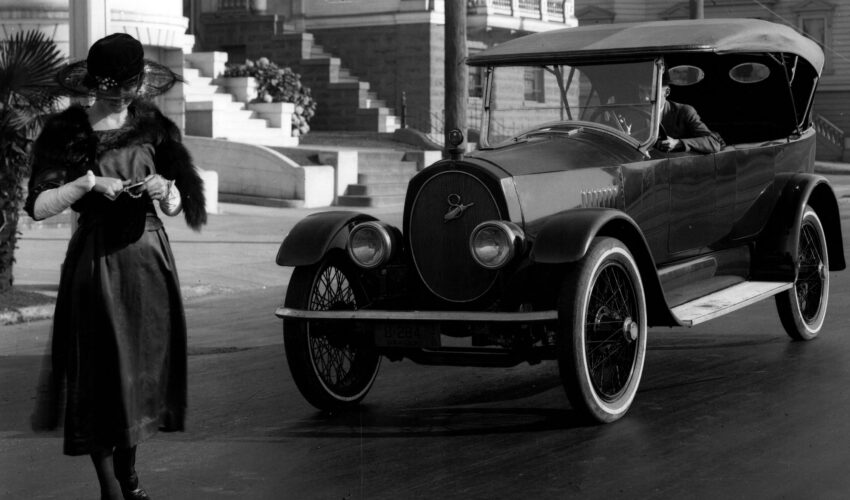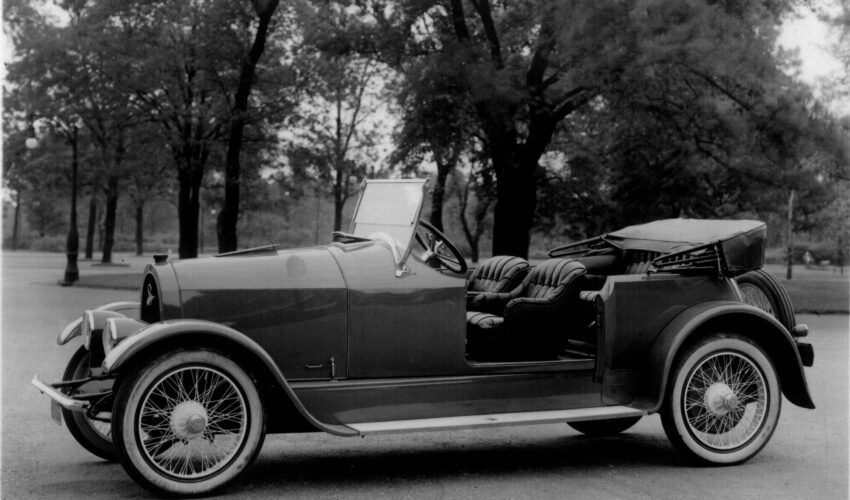NEWS
Kokomo’s Almost-Famous Apperson
After establishing a reputation for fine (and fast) cars, Apperson Brothers Automobile Company was poised to create an iconic car of the Jazz Age.
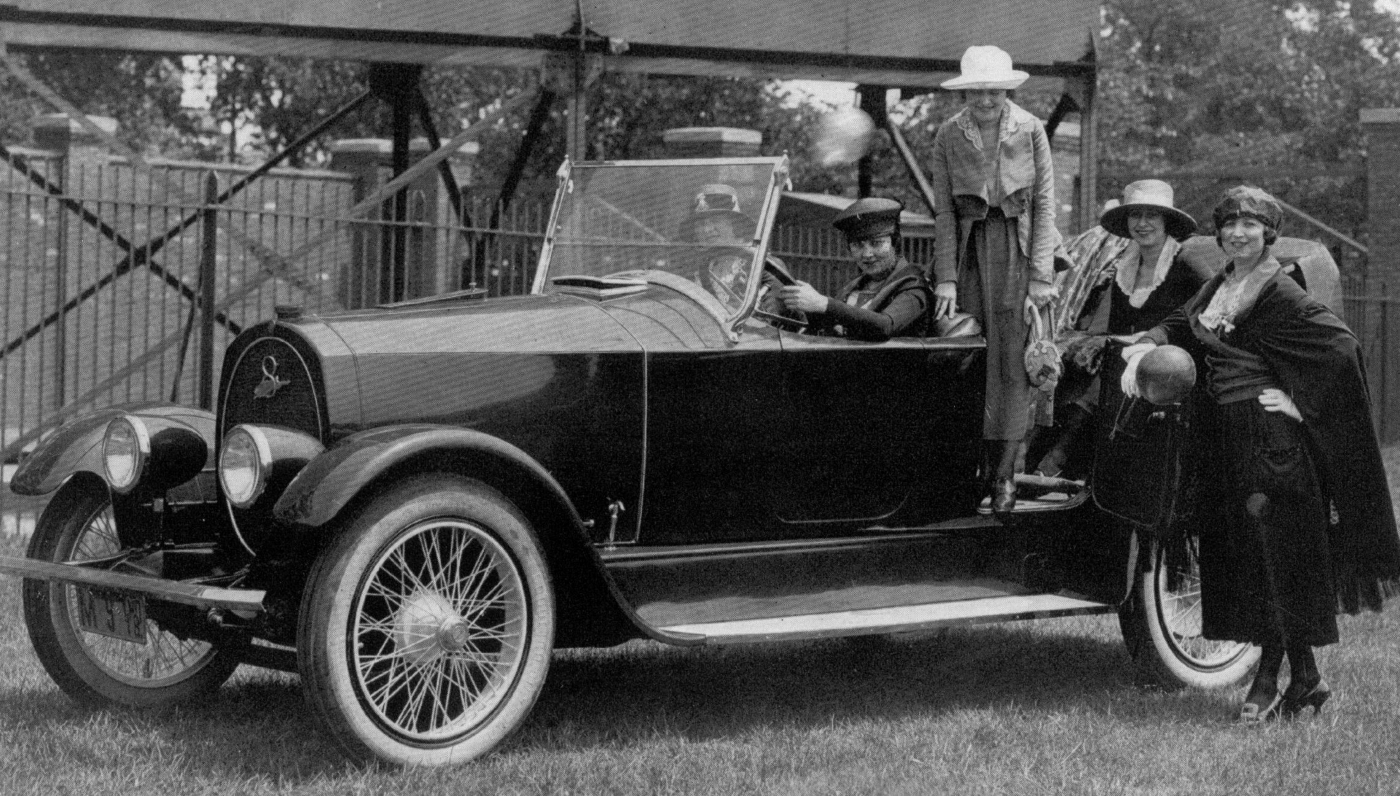
Early Innovation
Sometimes a very fine car just misses automotive immortality. Consider the Apperson, one of America’s true pioneering automotive brands. Apperson traces its origin to 1896, as part of the new Haynes-Apperson Company in Kokomo, which for a short half-decade was something like an early auto version of Silicon Valley with Haynes-Apperson claiming status as America’s first commercially successful company in the burgeoning industry.
Brothers Edgar and Elmer Apperson, who had first partnered with Elwood Haynes in 1894 to build a gasoline-powered “horseless carriage,” split with Haynes in 1901 and founded Apperson Brothers Automobile Company, staying in Kokomo and eventually opening two automotive plants. Located at 306 South Main Street, the Apperson’s south plant stood until 2016 when demolished to make way for 306 Riverfront, an apartment development which incorporates part of the plant’s historic façade.
In its early days, Apperson was a mighty automobile, garnering racing accolades and audaciously including in its 1908 catalog a 90-mile-per-hour racer for the gentleman amateur. Then in 1915 came a high-quality, V-8-powered tourer on par with Cadillac, and in 1917, Apperson introduced the stylish touring car later nicknamed the “Anniversary Eight,” a nod to the brothers’ 25-year anniversary in the industry.
Built as a custom model until 1921, Apperson’s Anniversary Eight should be remembered as an icon of the Jazz Age, but it isn’t. To prove how close to enduring fame it came, one need look no further than the Wisconsin-made Kissel “Gold Bug,” a speedster prized by celebrity owners such as aviator Amelia Earhart and fondly remembered by collectors today as one of the iconic cars of the Roaring Twenties.
A SILVER TOUCH
But what connection does the famous Kissel have to the barely remembered Apperson Anniversary Eight? The answer is Conover T. Silver, better known as Tom, a high-flying New York City automobile dealer who introduced several novel marketing ideas to the new industry in the 1910s. His “Silver Touch” combined a high level of service with innovative sales techniques. For example, Silver offered a one-year guarantee on his cars and developed the clever idea of recruiting independent service stations (dubbed Silver Service Stations) to service cars he sold. He leveraged additional sales appointing Silver Service Stations as Associate-Silver dealers and created one of the country’s earliest auto finance companies, the Overland Part Company, to allow purchasers to pay half the price at the time of sale and finance the remainder over a six-month period.
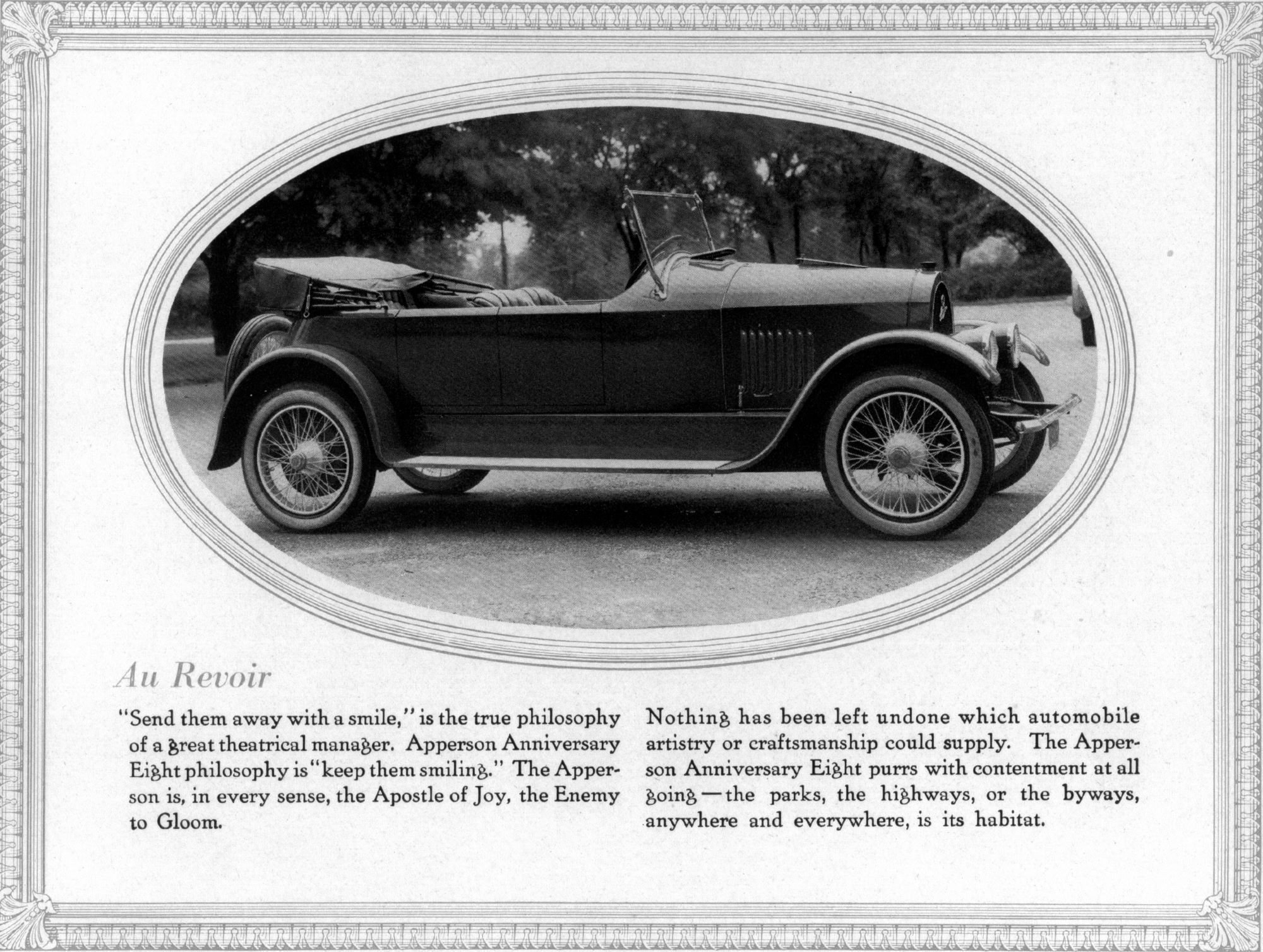
A catalog image of the 4-door Apperson Anniversary Eight Tourster. Photo courtesy of Ralph Gaebler.
In addition to creative marketing, Tom Silver introduced another potent sales stimulus–custom coachwork. Silver was not the only automobile salesman to enter the custom coachwork field, but he was one of the earliest to do so and was perhaps unique in that he did his own design work. Beginning in 1914, Silver rapidly developed a rakish look for his custom jobs, which included a distinctive radiator shell, often oval, designed to disguise the chassis, as well as cut-down doors, heavily canted windshield, bullet-shaped headlights placed low in relation to the radiator, exposed exhaust pipes, and most famously, the “seat in a drawer” that could be opened above the running boards. This last touch was too good not to be copied, so, of course, it was, perhaps most famously, by luxury automakers Paige of Detroit and Marmon of Indianapolis.
Silver acquired exclusive sales rights in the New York area for Apperson and Kissel in 1917. This led to the introduction of special Silver-designed cars on the Apperson and Kissel chassis at the 1918 New York Automobile Show. These cars, aimed at high-end buyers, were known as the Silver Apperson, later dubbed the Anniversary Eight, and the Kissel Kar Silver Special.
Among accounts of the event there is some confusion on which body styles were displayed on which chassis at the 1918 show. The Sept. 22, 1917, issue of Automobile Topics announced that Apperson Brothers and Silver “will combine in the design, production, and sale of what will be known as the Silver-Apperson car, and the first model is to be unveiled with suitable éclat at the New York show, January next.” Both open and closed body types were planned.
Several different bodies were shown on the Kissel chassis including a seven-passenger tourer and a four-passenger tourster, a close-coupled and more sporting version of the touring. The most interesting aesthetic details of the four-passenger body were a rounded rear-end that sloped inward as it rose towards the beveled beltline, and the doors, wide and center-mounted, one on each side of the body. It was, therefore, a two-door style, and to accommodate entry to the rear tonneau, the separate front seats were designed to slide forward. This was the sort of unusual detail for which Silver was famous. Finally, according to most automotive historians, there was also a two-passenger speedster painted chrome yellow, the Kissel Kar Silver Special later marketed unofficially as the Kissel “Gold Bug.”
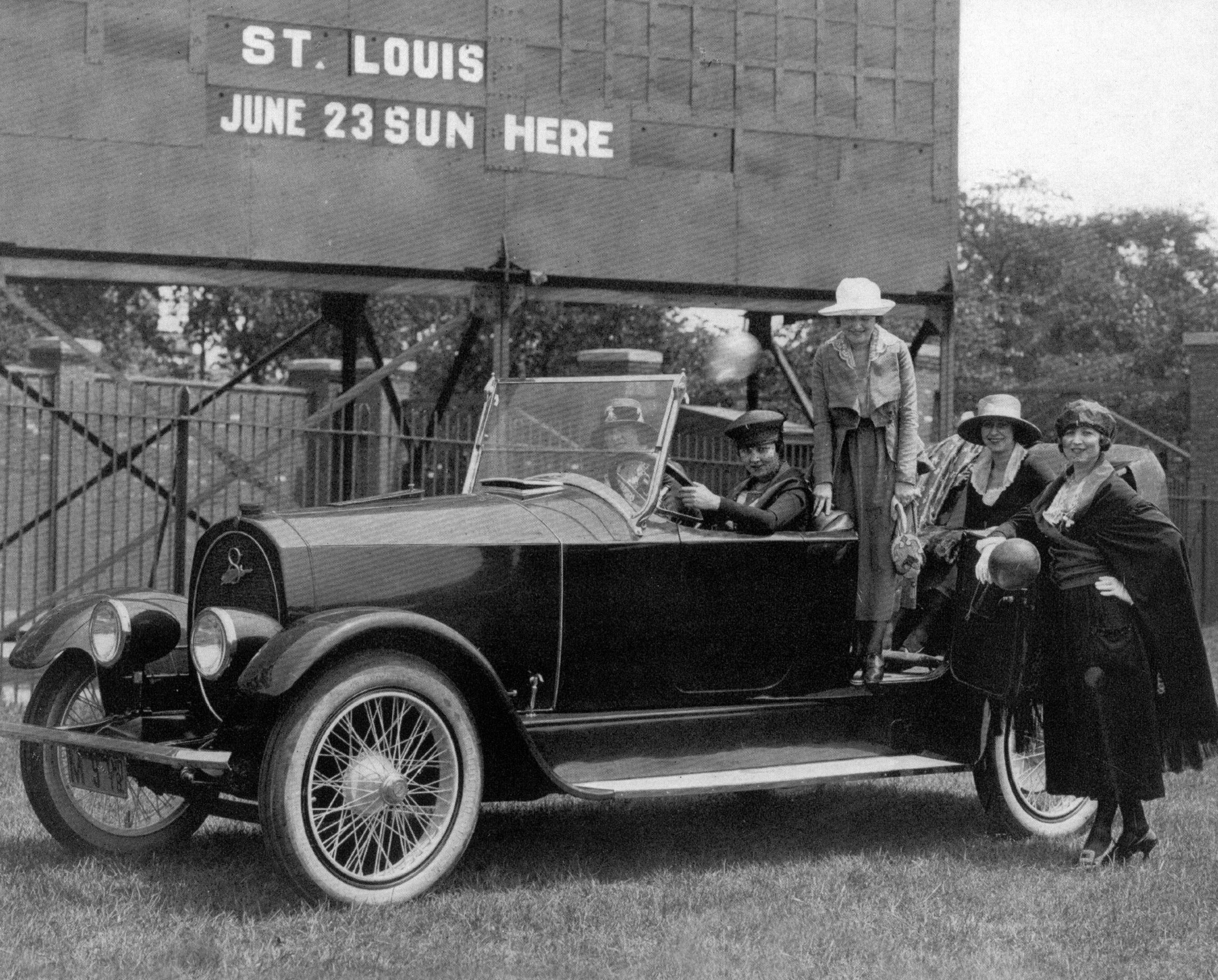
A catalog image of the Apperson Anniversary Eight Touring. Photo courtesy of Ralph Gaebler.
“The Kissel Kaper”
Not covered in journalistic accounts of the day, however, is evidence that the Kissel speedster was originally blueprinted by Silver as an Apperson. A picture of the blueprint, dated Oct. 20, 1917, appears in Automobile Quarterly, vol. 9, no. 3 (1971), in an article by Gene Husting entitled “The Kissel Kaper.” According to Husting, the drawing was found among the effects of Fritz Werner, Kissel’s body engineer, when he died. Werner had transposed the dimensions on the drawing to suit the Kissel’s 124-inch wheelbase, six inches shorter than Apperson’s. Efforts to track down the current whereabouts of the original drawing have been unsuccessful. It is not in the possession of either Husting’s heirs or the Wisconsin Automotive Museum in Hartford, Wisconsin, where Kissels were built.
What should automotive historians conclude? One possibility is that Apperson or (more likely) Silver shared the drawing with Kissel. The drawings Silver did for each company seem to have been non-exclusive, so this scenario would at least be possible. But the interesting question is whether Apperson ever built the speedster itself, which Husting flatly denies. Certainly, no such car ever appeared in an Apperson catalog, nor is there any mention of an Apperson speedster in newspapers of the day. It seems that Apperson rejected the design and that when it did so, Silver offered it to Kissel instead.
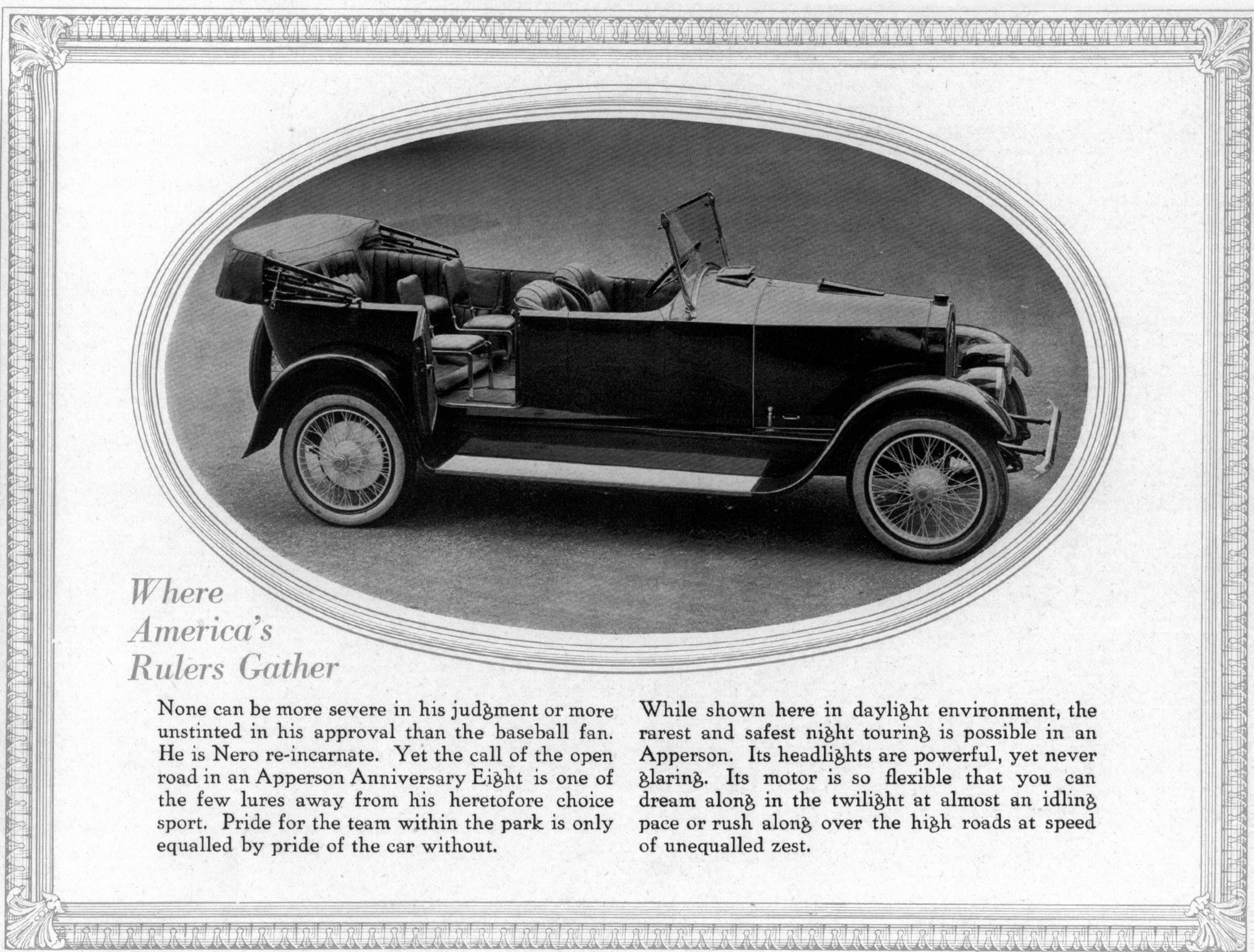
A catalog image of the Apperson Anniversary Eight Touring. Photo courtesy of Ralph Gaebler.
But why would Apperson, itself known for stylish, powerful cars, reject such a rakish design? Of course, we can never definitively answer it. In late 1915, Apperson had introduced a new body style as part of its 1916 line, the cloverleaf roadster. This four-passenger speedster model became quite popular for the next four or five years. It was designed by Bert Hubbard, Apperson’s chief engineer, and Apperson received a patent for the design in early 1916. Despite the patent, many companies copied the design, sometimes with four doors, sometimes with two doors and an aisle between the front seats. It’s possible Apperson felt no need to supplant or dilute sales by introducing a two-passenger speedster just three years later, especially since the cloverleaf roadster remained quite popular at the time.
Today the Silver Special speedster is associated with Kissel, so much so that most admirers do not realize that Silver planned the design for a different car. In part, this is because Kissel truly embraced the look, extending it to its entire line of “Custom Built” cars, and continuing to use it in gradually modified form through 1928. But in the last analysis, the Silver Special look is associated with Kissel because of its speedster, the chrome yellow “Gold Bug,” which remains a talisman of 1920s chic.
Apperson promoted the seven-passenger tourer and four-passenger tourster as the Anniversary Eight from 1919-1921 in a series of brochures with photographs that reveal both models to have been extremely beautiful. In 1920 they even launched a Silver-inspired sedan, but Apperson had never been as committed to the Silver Special look as Kissel, and in 1923 they dropped the Anniversary Eight altogether. A few of the four-passenger toursters still exist to document the beautiful Anniversary Eight, but without a chrome yellow speedster to stir the enthusiast, Apperson slipped off the automotive radar screen, all but for an Apperson “Goldbug” that almost happened.
By Ralph Gaebler, Member, Indiana Automotive
Learn more about Indiana Automotive, an affinity group of Indiana Landmarks, at indianalandmarks.org/indiana-automotive.
Stay up to date on the latest news, stories, and events from Indiana Landmarks, around the state or in your area.

